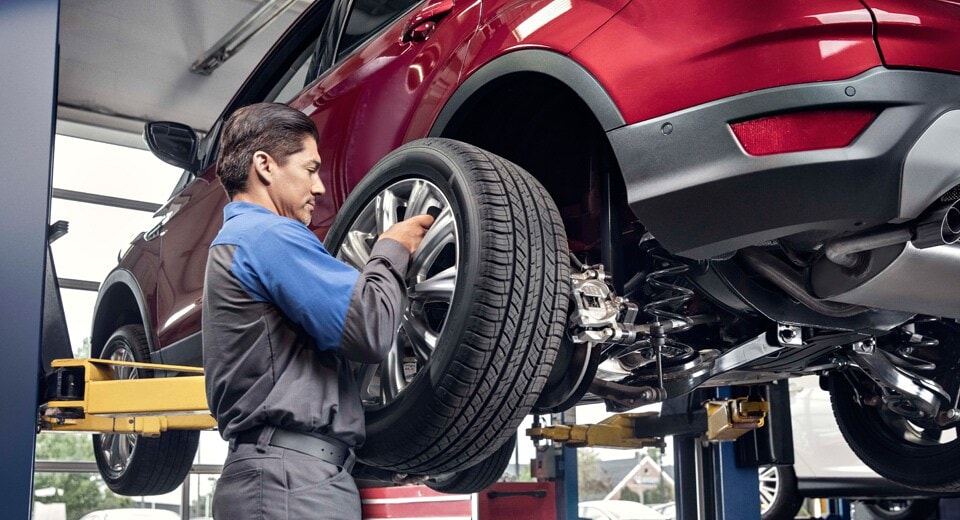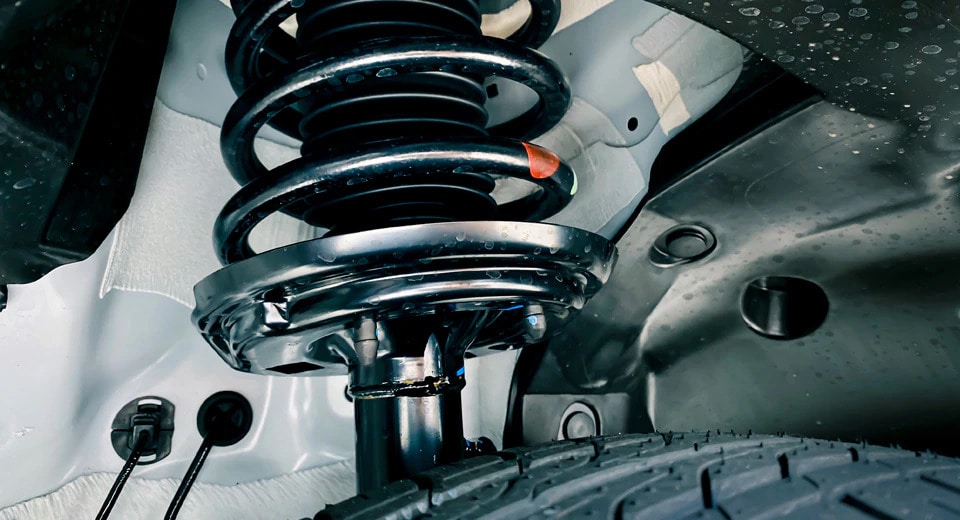
Spring is on its way to West Michigan! When the weather finally breaks, many West Michiganders take to the roads out of Grand Rapids for fun weekends of exploration and relaxation. Whether you're traveling down interstates or cross country, your shocks and struts make sure you don't feel every single bump in the road, keeping you and your passengers comfortable. These suspension parts even play a role in ensuring your vehicle doesn't damage itself.
Like many other moving parts on your vehicle, shocks and struts will wear down and eventually need to be replaced. In this post, we'll explain the difference between shocks and struts, what they do, and when it's time to visit the Borgman Service Center for replacements.
What Are Shocks and Struts?
Both shocks and struts absorb sudden movements created by bumps in the road. Where they are different is that a strut is a structural part of your suspension, and a shock is not.
Shock Absorbers or simply "shocks" are simple pistons with hydraulic fluid inside. When the wheel travels over a bump or dip in the road, the fluid inside compresses through a small hole into another chamber, which takes the jarring, sudden movement and smooths it out. The excess energy converts to heat and radiates out into the atmosphere. When the wheel returns to its normal position, the oil is drawn back into the first chamber, smoothing out this movement too.
McPherson struts, coil-over springs, or simply "struts" are different in that they actually hold your vehicle up off the ground. Struts are also usually where your alignment is set, so they're involved with your steering system too. Struts are typically found on the front wheels of vehicles for this reason. They are structural parts, and apart from their inner beam and huge spring, contain a replaceable shock cartridge. When that cartridge wears out, you don't have to replace the full assembly.
When Do I Need To Replace My Shocks or Struts?
We recommend new shocks and strut cartridges every 50,000 miles, or as needed. How often you drive on dirt or poorly maintained roads will mean replacing them sooner, with lots of highway driving potentially meaning later.
The first thing you may notice is your ride is getting a lot bumpier, but if this is gradual you may not. However, when struts are nearing the end of their life, the symptoms can be more pronounced. You may feel your vehicle nose-dive when you brake or lift off when you start moving. You may also find that it feels like driving a bowl of jelly when you exit the highway down a looped ramp.
If you notice uneven wear patterns on your tires, this can also point to worn struts. The Borgman Team is good at spotting these during a tire rotation, and if we see evidence of this, we'll let you know.
This tip is something that's really only practical on passenger cars, but you can push down on the fender above a strut and see if the car "bounces" when you release it. Healthy struts will raise the car to its normal position and stop. Worn struts will allow the car to travel more.

Need New Shocks or Struts? Visit the Borgman Service Center in Grand Rapids!
If you've been noticing your vehicle wandering or handling strangely, making new clunky noises, or just bumpier than normal, head over to the Borgman Service Center today. We'll make sure your vehicle is in tip-top shape for your spring wanderings around West Michigan.
Our friendly and highly knowledgeable staff is here to make sure you understand everything in your vehicle health report, and the function of the parts we need to replace. If you ever have any questions, we're here to help. Check out our latest Service Coupons, then Schedule Your Appointment Online. Come see why we're the Best in the West!